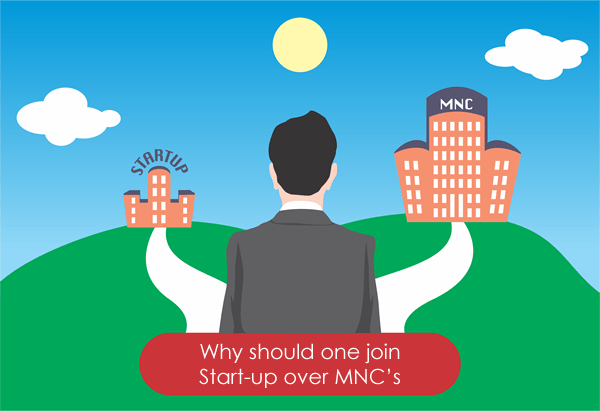
by Raghu Nandhan | Apr 1, 2019 | Blog, Industry Trends, Recruitment Technology
Today most of the organizations are leveraging the power of new technologies to streamline the hiring process to identify the best fit for a company. No doubt that big data represents a challenge and an opportunity for recruitment teams and staffing companies, and power analytics is turning into a key part to make a successful talent management process.
At Pragna, we look at the exciting opportunity to determine big data and use effectively. We look forward to working with our clients to leverage the ability of staffing and big data intelligence technology to improvise their talent pipeline and resource investments.
What Power Analytics Means to the Staffing Industry
Here are the primary impact areas of Power Analytics in Staffing
Traditionally, predictive analytics has helped the staffing firm to deal with the essential business queries of “who, when and why.” However, once applied to the staffing firm, predictive analytics helps to anticipate and optimize
Talent acquisition: helps to identify who is the top best? When should they be contacted? Why is this requisition/ job change opportunity attractive to this top talent?
Talent planning: Predictive analytics will optimize a talent pipeline by investing talent information to establish key factors that may result in higher resource allocation. For instance, identifying the simplest locations to speculate on recruitment campaigns for certain skills.
Job-response optimization: Throughout the recruitment process, power predictive analytics helps organizations optimize their job-postings response. Data analysis will give staffing firms with custom recommendations and tailored best practices to assist firms to overcome with higher responses to their job postings based upon primary factors such as period duration, location, occupation, and industry.
Client acquisition: A staffing firm’s talent database is its proprietary competitive advantage and sales tool. Therefore with the facility of power analytics to harness a staffing firm’s massive knowledge and provide valuable insight into the talent existing on hand, a firm is empowered to drive future sales conversations directly aligned to the talent they need.
Connect with us: 



by Raghu Nandhan | Mar 27, 2019 | Blog, Recruitment Technology
The world is changing due to the induction of new technologies. Manual jobs are taken by automation, the technologies or machines which were of great use until yesterday are being replaced by newer and better versions of it. As the whole era is changing so is the
Recruitment and Staffing Industry. Finding the right candidates was never easy. Few decades before there was lack of recruitment channels hence there was a time constraint to find good fits in short span of time.
After some years there was abundance of recruitment channels, thousands of candidates were available just a click away. But again, it had its own complexities not every person who applied for the job was a right fit. Filtering and identifying the right candidates was heck of a job for recruiters and obviously not forgetting the time consumed to find the right talent. So, the search for newer ways and technologies to overcome these challenges was always on.
ATS (applicant tracking software) has been and will continue to be highly useful to manage the candidates but it isn’t efficient enough to discover the right fit from a massive pool of applicants and it becomes even more impossible when the greatest fits don’t lie in the database.
So again, the search began and big data as a technology was discovered. It was successfully being used in different fields. So, leaders thought to incorporate big data into recruitment as well. Before we start discussing everything in detail about big data and how it’s being used to recruit top talent, we need to have a solid understanding of what big data is.
Big data is a terminology used for vast, unstructured, complex and huge data which is readily available to us and where traditional database management tools fails to manage it. This huge amount of data is analyzed to reveal patterns and insights which helps to make important decisions in various aspects. Big data analysis is used for everything from education, government, banking or financial services, to analyze someone’s productivity, or even monitoring the weather.
How Does Big Data help in Recruitment?
Big data helps recruiting companies to sort a wealth of information to see a larger and more complete picture of candidates. It evaluates a candidate’s profile by using five V’s:
Volume
- Variety
- Velocity
- Variability
- Veracity
Big data recruiting doesn’t analyze a candidate just by taking a look at the resume but it collects every bit of information available on internet about the candidate. Thus, helping a recruiter to evaluate the candidate from several angles. A candidate’s social media profile can help recruiter to screen not only on the basis of his skill set but also help analyse his personality and find weather he is a cultural fit or not.
It’s always been a challenge to find candidates with niche skills over job boards. Big data puts special emphasis on candidates who are active on social media platforms like LinkedIn, Facebook, and Twitter etc and demonstrate their expertise by sharing advice, thoughts, and interesting industry insights. It creates a 360-degree picture of a candidate both professionally and personally even before their first interview.
How big data has changed the traditional recruitment process:
- Big data recruiting is not biased as it is not based on subjective factors.
- It makes easy to screen or manager hundreds of applications in a short period of time thus reducing the cost per hire and the average time needed to fill open positions.
- It predicts the future recruitment trends.
- It also predicts about the candidate’s likely tenure with the firm and reveals whether he/ she might be a good fit for the culture of the firm.
If you wish to be a successful recruiter, then you have to learn to analyse data to provide the best possible fit for a position. Big data should be augmented with current recruiting practices and not replace it entirely.
Summary:
Big data recruiting can help you identify great candidates faster and in a more cost-efficient. However, you can’t solely rely on the information it provides, it can only guide you. Recruitment experts still need to correctly interpret the results to make better decisions.
Recruit smarter, not harder.
We as RPO leaders always thrive to implement new technologies; by leveraging such modern technology, we were able to deliver our customers more effectively.
If you have not yet leveraged the benefits of HR Data Analytics for your business, it’s time to look out for someone who does. Big data analytics in recruitment has transformed the way of recruitment process, saving you time and money as well as ensuring better hire quality
At Pragna, our vision, is to deliver good number of benefits to our Customers, when compared to traditional managed service
Connect with us: 



by Raghu Nandhan | Mar 15, 2019 | Blog, Recruitment Technology, Talent Acquisition
Can you answer these questions?
- How many contractors do you use? How many suppliers?
- Are your labour rates at true market price or better?
- What percentages of your contract spend goes through preferred suppliers?
Drawing a blank? If you are not sure what the answers are, that’s OK. It’s likely that you are either new to using a vendor management system or you are currently researching VMS solutions for possible implementation. If you’re not familiar with VMS solutions at all, you’re in for a treat.
Today more than 45 percent of the world’s total workforce has become contingent workers. That includes temporary workers, independent contractors, SOW-based labour, and freelancers.
Most organisations report that they expect their need for non-employee workers to grow more in near future. The problem is that every other organisation is looking for non-employee workers to grow their businesses. So how can you source and manage your extended workforce effectively and efficiently so that you don’t lose the war for talent?
The short answer: VMS.
The way organisations employ workers has shifted away from the full-time employees of yesteryear to a workforce of contingent workers that offer their specialties on a project-by-project basis.
The contingent workforce has significant benefits for the plethora of companies adopting this modern way of hiring. However, those who are hiring contingent workers but are still using manual processes and outdated automation tools to manage their workforce, will not be realizing those benefits, and could in fact be losing out.
This is why a vendor management system (VMS) is fundamental to the success of your contingent workforce management strategy.
The first step is to understand the five core benefits of a VMS—for both procurement and HR. Those benefits include:
- Cost Effective: Contingent workforce expenditures rank among the top spend categories in most organisations. Perhaps more troubling is the fact that most contingent labour is not taken into account when conducting financial planning, forecasting, and budgeting. That means that you may be spending more than you should. In fact, VMS user’s report 80 percent higher year-over-year cost savings compared to non-VMS organisations.
- Clarity: Lack of clarity is one of the key reasons organisations do not know what they are spending on contingent workers. Ardent Partners research indicates that organisations only maintain visibility into 45 percent of their total contingent workforce.
- Compliance:When it comes to contingent workers, if you do not know “who” is doing “what,” “where” they’re doing it, and “how” it is being done, you are setting yourself up for failure. Two important examples that come to mind are misclassification of non-employees and allowing unauthorised individuals access to systems or facilities.
- Quality Matters: The entire goal of leveraging the contingent workforce is to attract, retain, and utilize the best possible talent. A VMS can reduce time to fill and expand your access to quality talent. Some vendor management systems even allow you to source talent directly from the VMS!
- Efficiency: A VMS also drives efficiency by allowing you to automate procurement cycles, consolidate billing, and ensure invoice accuracy. It also makes it easier to measure and monitor your supplier performance. That will help ensure process and performance consistency.
Remodelling VMS Requirements
Today’s organisations increasingly need VMS software to manage both contingent workers hired as individuals and external companies doing project-related work. Many also have a greater need to stay compliant with international labour and tax laws surrounding global use of contingent staff.
HR and procurement leaders should use some key criteria if deciding to switch VMS providers or invest in a new system
- Support for Statement-of-Work Contracting
One of the keys buying considerations today is whether the VMS will be able to support you as you move from using it for the selection and tracking of contingent workers, to the selection and tracking of project consultants
Managing project work is more complex largely because of the different pricing mechanisms involved. Payment in these arrangements is not only time-based, it might also be milestones-based, deliverable’s – based or tied into performance on service level agreements. You’d like to be able to use the same software tool when you have the need for an individual contractor as well as a consulting company.
- Ease of Integration with Existing Systems
A VMS should integrate well with your existing technology platforms or processes for managing contingent staff. Many companies have reaped benefits from integrating its VMS with a core human resource information system, purchase order request system, supplier relationship management system and a security system for contract workers.
The integration reduces multiple steps from multiple systems and put them all into one easy-to-use, one-stop platform.
- Robustness of Analytics Tools, Bench-marking Data
The quality of reporting tools also separates VMS providers. One key metric is a time-and-tenure report that ensures contingent workers don’t work beyond the specified limit for co-employment.
- Vendor Neutrality
Vendor-neutrality means the system isn’t provided by a VMS owner who will steer you to contingent resources which may not always be the best or most cost-effective. This can be a concern if the VMS provider also has other contingent staffing services under its organisational umbrella.
Hopefully, we’ve covered all the basics of vendor management systems and you have a good idea of what to look for in a VMS.
At Pragna, we have the experienced team who understand the fast paced VMS environment and can submit potential candidates within a few hours of receiving the job orders. We have a good track record of supporting many customers with VMS support services and understand the nuances of working with such a system.
We at Pragna expertise in providing Customized RPO, Offshore Recruiting Service pertaining to all the Industry verticals, We strive hard to apply best practices, proven methodologies, and additional levels of diligence to improve the quality of our services.
A blend of ground-breaking ideas, detailed approach, and quality-oriented delivery has positioned us as a leader in the Recruitment process outsourcing (RPO) industry.
Connect with us : 



by Raghu Nandhan | Jan 21, 2019 | Blog, Industry Trends
If you’ve been in business for a while, you would know by now that mistakes are part of the process. New businesses and start-up companies are slowly learning this. Nobody is perfect, but some mistakes happen on a larger scale than others.
Lots of these mistakes can be avoided. Brands are making these mistakes only because they don’t see them until it’s too late. Realistically, there are hundreds of mistakes different businesses make each day.
However, I am going to talk about specific types of mistakes which can be avoided easily. Your business always needs to be growing. If sales start to drop off, it’s going to be a major problem for your company. But you can prevent this by avoiding few common mistakes I’ve discussed below. Use this as a reference to correct any of the mistakes you’re currently making or to avoid making them in the first place.
- Forgetting about the customer: Your business will live and die by your customers. All of your decisions need to be profitable. These two statements don’t always add up. But you need to find a balance between them if you want to grow. On one hand, a decision you make could reduce your operational costs and ultimately drive up your profit margins. But if that cost reduction impacts the quality of your products and services, it’s not going to benefit your customers.
As a result, sales will start to drop. So if you forget about your customers, it will be easy for them to leave and go to one of your competitors instead. If you put more emphasis on making your customers happy, the rest will take care of itself. Don’t cut cost just to turn a higher profit.
- Overlook sales: Shockingly, this is a major issue. Sometimes brands start to lose sight of why they are in business. You’ve got to be making money. This money stems from sales. That’s the best way to make sure your company will grow and won’t stall in a plateau. If what you’re doing doesn’t translate to conversions and transactions, it’s not helping you. Running out of cash is one of the top reasons why start-ups fail.
If you can focus on new ways to generate sales, you’ll always have a steady cash flow. You may have many other areas of your company that require attention. However, you need to have priorities. You can’t let sales take a back seat, or it’s going to be a problem for you in the future.
- Neglecting data: Another common issue is that companies ignore the metrics completely. I’m talking about factors such as:
- Website traffic
- Conversion rates
- Click-through rates
- ROI
These are just a handful of the top metrics every marketing manager needs to track. Without this data, how can you know if your campaigns are successful? How will you know what decisions to make? Another common issue is business owners are clinging to the wrong data. Here’s an example to show you what I mean.
Let’s say your business has website traffic that is increasing exponentially. You can’t just assume that it means your company is successful. If your sales and conversions aren’t increasing at the same rate, you’re not actually growing, which should be a major concern for you. That’s why you need to track your data and know how to analyse it properly as well.
- Saying no to new technology: Adapt or die. This sentiment can be applied to nature as well as business. Resisting to change will be the downfall of your company. That’s why you need to educate yourself about new technology trends such as:
- Live chat
- Artificial intelligence
- Automation
- Machine learning
- Beacon technology
These are all things that can help your business grow. Many business owners are stuck in their old ways. But just because something worked for you back in 2005 doesn’t mean that strategy will work in 2019. To be successful in the future, you need to look beyond today, tomorrow, and next year. You need to be prepared for technology advancements coming in 2022 or 2025.
Keep up with the latest trends. You don’t need to apply everything right away, but you have to start somewhere. Have an open mind moving forward, especially when it comes to technology advancements.
- Not analyzing your competitors: Your business doesn’t operate in a vacuum. There are outside factors that will have a direct impact on your success. You need to keep an eye on your competitors. Otherwise, they’ll steal your customers before you even realize what happened.
Compare yourself to them to see how you stack up. It’s simple but very effective. It forces you to see where your business stands on paper. Just saying things like “we’re really good at what we do” doesn’t give you any benefit. When you put things in writing, any mistakes or areas where you can improve will be more obvious.
You can also take advantage of helpful tools to monitor your competitors. One of the first things you need to do is identify whom you’re competing with. You should analyse competitors locally, regionally, and online as well. Compare your prices to them. Look at their websites. Check out their advertisements and social media campaigns. What’s working for them? What needs improvement? Then, you can apply what’s working for your competition in your own business. Avoid their mistakes. See what customers are saying about your competitors online.
- Disregard customer reviews
In addition to reading what people think about other companies, you need to see what customers are saying about your business online? There are lots of different places you need to check, such as:
- Reviews on your website
- Third-party sites, e.g., Google or Yelp or Glassdoor
- Social media comments
Respond to reviews. Take notes about what customers are saying. Make the necessary changes based on this information. Group common reviews together. If all of your customers are having the same problem then try resolving the issue as soon as possible. In addition to harming your relationships with existing customers, unanswered bad online reviews will have a direct impact on future sales. In fact, 92% of people read reviews before making a decision. Further, 88% of consumers say they trust an online review as much as a recommendation from someone they know. This impacts their buying decisions. Furthermore, 35% of people are less likely to buy if no online reviews are available.
This means you need to take this strategy to the next level. Not only do you need to read and monitor reviews, but you also need to encourage your customers to write reviews to improve your online reputation. Ignoring this will be a costly mistake.
- Not accepting more payment methods: This relates to the point about forgetting the customer. I know it’s more expensive for you to accept certain forms of payment compared to other options. However, everyone has different preferences. The days of just accepting credit and debit cards are over.
As I said before, you need to adapt to new trends and technology. Digital payments are becoming the way of the future. Today, 19% of consumers are using digital wallets. You would not want a customer to change their mind about a purchase because you don’t accept their preferred payment method. Don’t expect them to just reach for another card. Instead, they’ll go find what they’re looking for from another business.
- Never offering value: Why should people buy from your business? It may sound like an odd question, but think about it for a minute. You need to create a highly effective value proposition. This will make it clear to everyone why they should buy from your business. You need to understand the wants and needs of your customers. There’s a big difference between what consumers want and what marketers want:
Today 72% of consumers want to see posts from brands on social media related to discounts and sales. However, just 18% of marketers post those things. There is obviously a major discrepancy here. Even if you don’t want to offer discounts all the time, you still need to come up with ways to add value to your brand. Otherwise, consumers won’t have a reason to buy from you, and sales will eventually decline.
Conclusion
Nobody is perfect. Every business makes mistakes. However, you can reduce the chances of making these errors if you know what to look for before it happens. Some of you may already be doing some of the things I’ve covered on this list. But now, you can identify those mistakes and make changes before they get out of hand. If you can stay clear of the blunders I’ve outlined above, it will help your business avoid a plateau or a decline.
So as the famous quote says “Learn from the mistakes of others. You can never live long enough to make them all yourself”, learn from your mistakes as well as from other companies in the market. By doing so you can continue growing.
What types of mistakes does your business need to fix to stimulate growth? Do tell us in the comment section below. And if this helped you in any way then do not forget to share the blog with your friends on Facebook, LinkedIn and other social media platforms to amplify its reach.
Pragna is a young and dynamic company determined to make a mark in HR and Recruiting space. We provide and deliver a wide range of HR solutions and quality software and services for businesses of all sizes. Click here to know more about us.

by Raghu Nandhan | Dec 11, 2018 | Blog, Offshore Recruitment
Is outsourcing HR the best solution for your business, or should you move HR in-house? Do you have an answer to the above question if Yes then thumbs up, if No then continue reading to find out more about the two options.
HR workers manage a wide level of responsibility based on the needs of the organisation. They manage the hiring processes of recruiting and interviewing potential employees, as well as orientation and training of workers. They also manage the relationship between employee and employer, as well as completing payroll and managing benefits. HR professionals work with the leadership team to implement policy changes and to best coordinate the wider administrative functions and duties of a business. Hiring and training new employees is one of the most expensive parts of the business cycle.
One of the best ways to determine whether your business should outsource the HR department or keep it in-house starts with taking a look at the size of your company. This will give you an idea of the services and manpower needed to run HR. Next, review the pros and cons of both options by taking a deeper look into what you may gain or lose through the process. Last, research the stories of other businesses similar in size to your own and find out how outsourcing or in-house HR has worked for them.
When you first start your business, your priority is to hire people who are integral to building the product and growing the company to fill the roles that move the bottom line and grow the business. At some point, a business grows big enough that it needs people to take care of the back office operations of the company. You need someone responsible for coordinating interviews, sending offer letters, managing benefits administration, and much more.
Figure out what stage of growth your business is in:
10-50 Employees
If you’re running a new business it can be easy to believe you can do it all yourself. There are only a few people in your company. Between managing benefits, equity, salaries, time off, writing employee documents, hiring, firing, onboarding, and everything else that is going on, where will the time come to talk to investors, build the product, or do significant business development? At this stage, you should outsource most of your human resources function. Your focus should be on the people who are coming in and out, not whether they are getting their pay check on time.
50-500 Employees
You’ve raised a much larger round and you are going to be scaling your business much faster, maybe growing from 50 employees all the way up to 100-500 employees. Recruiting is probably a massive priority as you grow and you might be running into new issues when it comes to expansion and compliance.
At this point, you need a back office time. For starters, you need to have someone on board who is able to handle strategic HR projects that are meant to make the company better. These include initiatives to keep employees healthy, to ensure that they are acquiring new skills that make them more useful. These requirements are better filled in-house, since they are so specific to your company.
But there’s still a role for outsourcing. While you might feel an itch to bring everything in-house, payroll experts are costly and normally unnecessary. There’s also no need to bring basic compliance in-house. Outsourcing this or getting software to do it will save you money and time that will allow your busy HR department to focus on hiring and strategic projects.
500-1000+ Employees
Top of Form
Bottom of Form
These types of companies are not too dissimilar to medium-stage companies. The difference here is that many larger companies bring many HR functions back in-house because they consider it a competitive advantage. But even for large companies, many of the administrative HR tasks can remain outsourced. Why bog down your in-house HR team?
Keep your HR department focused on finding quality talent, tackling strategic projects, and being the liaison to the rest of your team. Allow outsourced HR and payroll providers to handle the rest.
Apart from these few other factors can also be considered before coming to a conclusion:
- What level of HR expertise/skills do you need?
When hiring a in house HR person you are getting only the skill set they bring. When using an HR firm with multiple consultants, you have access to all of the skill sets employed at the firm.
This is a key question. If you determine that you would like to hire a HR Manager with 5-10 years of experience, this is where the cost of outsourcing to an HR firm makes more sense because the cost will be a fraction of hiring an internal HR Manager.
- What are the employee-related goals for your business?
Do you want to become an “employer of choice” with a goal of attracting top talent? Do you want to create career paths for employees? Focus on employee retention? Using an outsourced HR firm with the experience of doing this type of work regularly, can help you achieve these goals more quickly. Additionally, it will provide you with some ideas you may not have thought about due to the consultants varied experiences.
- Do you need your HR person onsite every day?
With 100 plus employees, having HR onsite every day makes sense.
- How much time do you have to supervise an HR person?
Entrepreneurs rarely have time to effectively supervise. And supervising a skill set like HR, that they often know nothing about, makes it even more difficult. Working with an outside HR firm gives Leadership peace of mind knowing that skilled professionals are in place who will work proactively, advice and collaborate, versus look for frequent direction. With an outside HR firm true supervision is minimal.
- Do you want an HR professional who can provide objective advice and guidance?
When hiring someone in-house, they may not be as forthcoming with feedback that does not agree with “the boss”. The internal HR person wants to remain employed and because of this may be reluctant to share feedback that could be perceived as “not being a team-player.” An experienced HR consultant understands that one of the roles they play is to be a trusted advisor and look at situations objectively while sharing ideas and feedback that will improve the client’s workplace, support their goals and culture while also mitigating risk.
HR is an important department. But many businesses sometimes forget this. Or they forget that the people doing it are qualified to do more than monotonous tasks. Outsourcing human resources and introducing new changes within the company can be both eventful and fruitful and worth the risk taken. Finding the right consultant not only gives you a sense of satisfaction but also will reward you and your company in the long term and will provide you with long lasting benefits. Try to hire a professional that truly understand the sentiments of the company and its motives and values.
I hope this article inspired you to investigate what works best for you, your organisation and most importantly, your employees – because they are your business’s most important resources.
If you found this helpful then don’t forget to share it with your friends and colleagues.
What business functions have you considered outsourcing? Tell us in the comments section below.
Pragna provides a wide range of Recruiting and HR solutions for businesses of all sizes. Click here to discuss your HR/Recruiting needs with us.

by Raghu Nandhan | Nov 14, 2018 | Blog, Industry Trends, Talent Acquisition
A start-up is a company working to solve a problem where the solution is not obvious and success is not guaranteed. There’s something incredibly adventurous to work in start-up companies. Maybe it’s the lack of bureaucracy and office politics or the freedom to create ideas and make decisions. Either way, many job candidates are attracted to the start-up environment. But this doesn’t mean that start-up companies are right for everyone.
Are you considering a jump into the start-up industry, than there is a series of questions you must answer to yourself to find out “Do you actually fit in a Start-up?”
- How Can You Solve the Company’s Problems?
Start-ups have too much work to do and not enough people. So if you are capable of solving the specific problems a company faces and get results, many other concerns goes the side way. The main one left is cost and your interest in the job shouldn’t be about money, but rather fulfilling specific personal goals or mere learning.
- Does your Passion connect to the Company’s Mission?
Convictions and motivation are way more important in a candidate than experience. Wanting to work at a start-up is a terrible motivation for applying. A good motivation is finding a company whose mission resonates with you, whose values align with yours, and whose goals work perfectly with your skill set.
- Are you a Multitasker?
Since most start-ups financially aren’t able to fill all of the positions they need. They expect to do significant savings by combining two or many staff positions into one. That way, the cost of benefits can drop significantly. So if you are capable of wearing multiple hats without taking a toll on your focus and productivity then you are the right fit.
- What are your Intrinsic and Extrinsic Motivations?
It’s important to figure out your motivations before you start working in a start-up. Inevitably your start-up career will go through extreme challenges, and this understanding will be called upon. Extrinsic motivations could be salary and benefits and intrinsic motivations could be purpose, mission and learning. But it’s important for you to articulate your motivations and have clarity on what it really means.
- Do you tend to push the Boundaries?
If you are a person who likes to be in your own comfort zone then think twice before joining a start- up. Start- up environment seeks candidates who put continuous efforts to achieve a task and tend to experiment new, pushing their boundaries every time.
- Do you have the Entrepreneurial Spirit?
The best start-up employees think like entrepreneurs and are prepared for the challenges. They have Creating something from nothing attitude. Working at start-up involves working with different types of personalities, keeping an open mind, always staying true to yourself and speaking up when you have an opinion.
- Are you Accountable or Do you have sense of Responsibility?
Successful start-ups have no place for sycophants. You have to show that you are willing and able to not only come up with ideas, but also defend those ideas and implement them. You can adapt and think on your feet.
So analyse yourself before thinking to start you career in a start- up. If you have a “YES” for all the above questions then you are right fit. If not kindly drop down the idea and focus on improving your Entrepreneurial skills which could help you in many other ways.
If you’re looking for top tech talent to power your start-up and strengthen your culture, try Pragna Solutions today.
And if you enjoyed this post, it would be great if you’d help it spread by emailing it to your friends, or sharing it on 

 . Thank you!
. Thank you!





